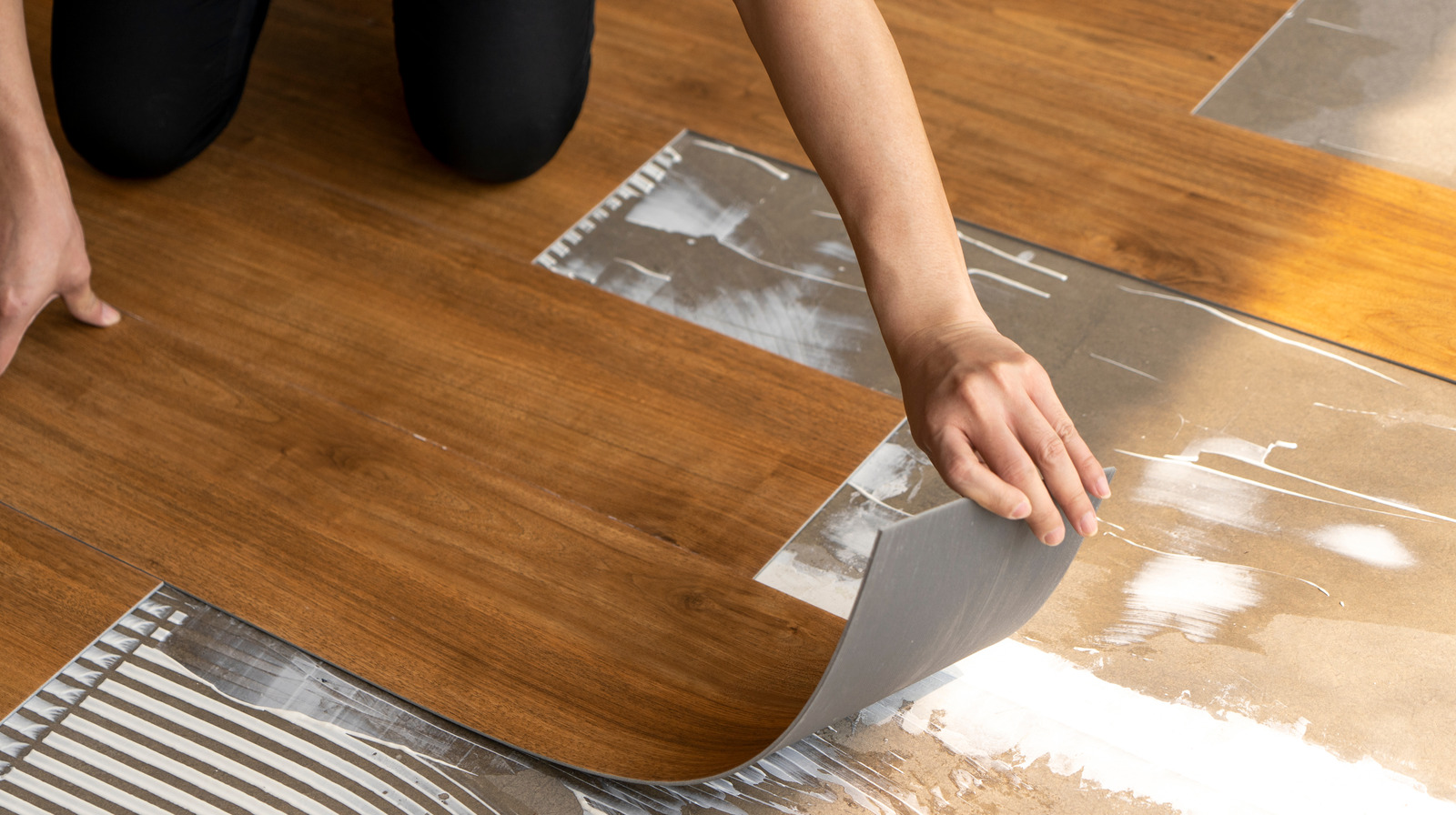Do you have a nagging problem with lifted linoleum flooring? It can be an eyesore, a hazard, and a potential breeding ground for bacteria. But don’t let that get you down! Fixing lifted linoleum is a manageable task with the right knowledge and tools.

Image: readytodiy.com
Understanding Linoleum Flooring
Linoleum is a durable, low-maintenance flooring material composed of natural ingredients like linseed oil, cork, and jute. It’s widely used in kitchens and bathrooms due to its water resistance.
Causes of Lifted Linoleum
There are several factors that can contribute to lifted linoleum, including:
- Moisture exposure: Water can seep under the flooring and cause the adhesive to fail.
- Improper installation: Poor subfloor preparation or inadequate adhesive application can lead to lifting.
- Age and wear: Over time, the adhesive may weaken, resulting in lifted areas.
- Temperature fluctuations: Extreme temperature changes can cause the flooring to expand and contract, leading to lifted edges.
Fixing Lifted Linoleum Flooring: Step-by-Step
Now let’s dive into the steps to fix your lifted linoleum flooring:

Image: mromavolley.com
1. Gather Your Materials
- Linoleum cement or epoxy adhesive
- Linoleum roller or heavy weight
- Putty knife or linoleum knife
- Damp cloth
2. Clean the Surface
Thoroughly clean the subfloor and the underside of the lifted linoleum using a damp cloth to remove any dirt or debris.
3. Apply Linoleum Cement
Apply a thin layer of linoleum cement to the subfloor using a notched trowel. Be sure to cover the entire area beneath the lifted linoleum.
4. Reposition the Linoleum
Carefully lift the edge of the lifted linoleum and reposition it over the adhesive. Press down firmly to ensure good contact.
5. Roll or Weight the Area
Use a linoleum roller or a heavy object (e.g., a stack of books or a dumbbell) to apply pressure on the repaired area. This will help to flatten the flooring and secure the adhesive.
6. Clean Up Excess Adhesive
Wipe away any excess adhesive that may have squeezed out from under the flooring using a damp cloth.
7. Allow to Cure
Let the adhesive cure for the amount of time specified by the manufacturer, usually 12-24 hours. During this time, keep the traffic on the repaired area to a minimum.
Tips and Expert Advice
- Use a moisture barrier: If moisture exposure is an issue, install a moisture barrier beneath the subfloor to prevent future lifting.
- Cut the lifted flooring: If the lifted area is large or damaged, cut it away and replace it with a new piece of linoleum.
- Seal the edges: To prevent moisture from seeping under the linoleum, seal the edges with a silicone caulk or a heat-welded seam.
Frequently Asked Questions
- Q: Can I fix lifted linoleum myself?
A: Yes, fixing lifted linoleum is a DIY-friendly task with the right tools and knowledge. - Q: How long does it take to fix lifted linoleum?
A: The repair time depends on the size of the lifted area and the adhesive used. Allow at least 12-24 hours for the adhesive to cure. - Q: What type of adhesive should I use?
A: For most repairs, linoleum cement or epoxy adhesive is recommended.
How To Fix Linoleum Flooring That Is Lifting
Conclusion
With the techniques and tips outlined above, you can effectively fix lifted linoleum flooring and restore its functionality and appearance. Remember to thoroughly research and consider the specific needs of your flooring to ensure a successful repair. If you encounter any difficulties, don’t hesitate to consult with a professional for guidance or assistance.
So, dear readers, have you ever encountered lifted linoleum flooring? Don’t let it ruin your day! With a little patience and the tips provided in this article, you can fix it and enjoy a smooth and beautiful floor once again.